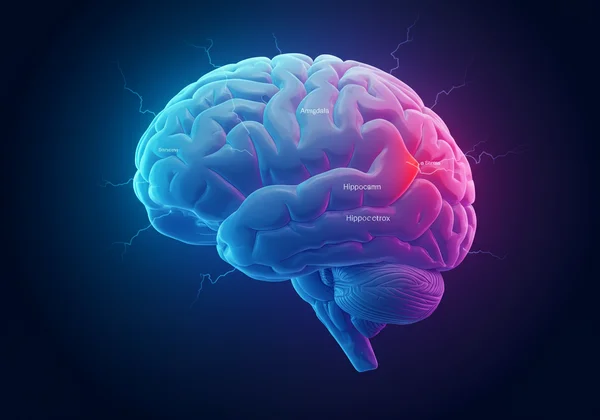CPTSD Causes: Understanding Complex Trauma & Its Roots – A Guide and CPTSD Test Overview
Do you often struggle with intense emotional pain, difficult relationships, or a deep-seated feeling of being flawed, and find yourself constantly wondering why? If you're searching for answers to persistent challenges that seem to have no clear origin, you are not alone. This article is here to validate your experience by exploring the profound CPTSD Causes and the impact of long-term trauma. Understanding the roots of Complex PTSD (CPTSD), especially those formed in childhood, can be the first, most empowering step toward healing. For many, a key question is How can I tell if I have CPTSD? Gaining clarity on the origins of your struggles can illuminate the path forward. If you're looking for a starting point, you can take the free CPTSD test to gain personalized insights.
What is Complex Trauma? Defining CPTSD's Origins
At the heart of CPTSD is the experience of complex trauma. Unlike a single traumatic event, complex trauma refers to exposure to multiple, prolonged, and often inescapable traumatic events. It’s not about one terrible moment but a series of them, woven into the fabric of a person's life, especially during formative years. This chronic adversity fundamentally shapes a person's development, worldview, and ability to cope.
The World Health Organization's ICD-11 diagnostic guidelines recognize that these long-term experiences create a distinct set of symptoms beyond traditional PTSD. Understanding this foundation is crucial because it shifts the focus from "What is wrong with me?" to "What happened to me?" This is a vital distinction on the journey to self-compassion and recovery.
How Complex Trauma Differs from Single-Incident PTSD
While both PTSD and CPTSD are responses to trauma, their origins are different. PTSD often develops after a single, terrifying event, such as a car accident, a natural disaster, or a physical assault. The trauma is typically a distinct "before" and "after" moment.
Complex trauma, on the other hand, is cumulative. It's the result of enduring traumatic circumstances over months or, more often, years. The threat is not a one-time shock but a constant presence. Because there is no clear "after," the nervous system adapts to a permanent state of high alert, and the survivor's sense of self and ability to relate to others are deeply affected.
The Core Ingredients: Repetitive, Prolonged, and Relational Trauma
Complex trauma has three key components that work together to create its damaging effects:
- Repetitive and Prolonged: The traumatic experiences are not isolated incidents. They happen over and over again, creating a relentless environment of fear, unpredictability, or danger from which there is no escape.
- Interpersonal and Relational: This is a critical factor. Complex trauma is often inflicted by other people, particularly those who were supposed to be sources of safety and care, like parents or partners. This betrayal of trust wounds deeply, disrupting the fundamental human need for secure attachment and connection.
When trauma is relational, it teaches devastating lessons: that the world is unsafe, that people cannot be trusted, and that you are powerless. These beliefs become the lens through which a survivor sees everything, creating the foundation for CPTSD. To see how these factors may relate to your own life, a cptsd test online can offer a helpful perspective.

Childhood Trauma: A Deep Dive into Developmental Trauma
While complex trauma can occur at any age, it is most impactful during childhood and adolescence. This is often referred to as developmental trauma. During these critical years, our brains are rapidly developing, our personalities are forming, and we are learning how to trust others and regulate our emotions. When trauma disrupts this process, the effects are woven into the very architecture of a person's being.
A child's brain adapts to its environment to survive. In a loving, safe home, the brain wires for connection, curiosity, and calm. In a chronically threatening or neglectful home, it wires for survival, leading to hypervigilance, emotional dysregulation, and a damaged sense of self that can persist for a lifetime.

The Silent Wounds of Neglect and Attachment Issues
Trauma isn't just about what happens to a child; it's also about what doesn't happen. Emotional neglect—the consistent failure of a caregiver to respond to a child's emotional needs—is a powerful and often invisible cause of CPTSD. A child who is ignored, invalidated, or emotionally abandoned learns that their feelings don't matter and that they are alone in the world.
This leads to profound attachment issues. Secure attachment, the bond formed with a responsive and reliable caregiver, is the bedrock of healthy development. Without it, individuals may develop insecure attachment styles that make it incredibly difficult to form trusting and stable relationships in adulthood.
Impact of Chronic Abuse: Emotional, Physical, and Sexual Trauma
Chronic abuse in any form is a direct pathway to childhood trauma CPTSD.
- Emotional Abuse: Constant criticism, humiliation, manipulation, and intimidation erode a child's self-worth, leaving them with a core feeling of shame and defectiveness.
- Physical Abuse: Living with the constant threat of physical harm creates a state of terror and hypervigilance, training the nervous system to be on high alert for danger at all times.
- Sexual Abuse: This form of abuse is a profound violation of trust and boundaries, often leading to deep-seated feelings of shame, betrayal, and a disconnection from one's own body.
Traumatic Environments: Systemic Oppression & Unsafe Upbringing
Complex trauma is not limited to the immediate family unit. Growing up in chronically unsafe or invalidating environments can also be a significant cause. This includes living in a war zone, experiencing community violence, or being the target of systemic oppression like racism or poverty.
When the world around you is consistently hostile or dangerous, it creates a prolonged stress response that can lead to the symptoms of CPTSD. The feeling of being unsafe becomes a constant, shaping development and long-term well-being. If you are questioning your experiences, consider taking a free cptsd self-assessment for initial clarity.
How Early Trauma Shapes Adult CPTSD Symptoms
The long-term trauma effects of a difficult upbringing don't just disappear. They manifest in adulthood as the core symptoms of CPTSD, impacting one's relationship with themselves, with others, and with the world.
Altered Self-Perception: Shame, Guilt, & Worthlessness
Perhaps the most painful legacy of complex trauma is a shattered sense of self. Survivors often internalize the abuse or neglect they experienced, leading to a pervasive and toxic sense of shame. They carry a deep-seated belief that they are fundamentally flawed, broken, or worthless. This internal critic can be relentless, sabotaging success, relationships, and any chance at happiness.

Emotional Dysregulation: Overwhelm, Numbness, & Outbursts
When you grow up in chaos, your ability to manage emotions is never properly developed. As an adult, this can look like:
- Intense emotional reactions that feel disproportionate to the situation.
- Sudden mood swings or emotional outbursts.
- Chronic emotional numbness or feeling disconnected and empty.
- Difficulty self-soothing or calming down after being triggered.
These are not signs of weakness; they are the result of a nervous system that is stuck in survival mode. The well-known "fight, flight, or freeze" responses become default settings, often accompanied by "fawn," a pattern of people-pleasing to avoid conflict.
Relationship Challenges: Trust, Boundaries, & Attachment Styles
Because complex trauma is often relational, it makes future relationships incredibly challenging. Survivors may struggle with an intense fear of abandonment, have difficulty trusting others, or unknowingly recreate unhealthy dynamics from their past. Setting healthy boundaries can feel impossible or dangerous, leading to a cycle of unsatisfying and often painful connections. Understanding your past can be the first step to building healthier relationships, and our confidential screening tool can help you start that process.
Neurobiological Changes: The Brain's Response to Chronic Threat
Modern neuroscience confirms that complex trauma physically changes the brain. Chronic stress can alter the development and function of key areas, including:
-
The Amygdala (Threat Detector): Becomes overactive, leading to hypervigilance and anxiety.
-
The Hippocampus (Memory Center): Can shrink, affecting memory consolidation and leading to fragmented trauma memories.
-
The Prefrontal Cortex (Rational Thinking): Can become underactive, making it harder to regulate emotions and control impulses.

These are not irreversible changes, but they validate that the symptoms of CPTSD are a real, biological response to overwhelming experiences.
The Path Forward
Understanding the causes of CPTSD is a revolutionary act of self-compassion. It allows you to see that your struggles are not a personal failing but a logical and adaptive response to unnatural circumstances. Recognizing how prolonged, repetitive, and relational trauma has shaped your brain, your emotions, and your relationships can lift the heavy burden of shame and self-blame.
This knowledge is the first step on the healing path. It provides a map to understand where you have been, which empowers you to choose a new direction for your future. Remember, healing is possible, and you are worthy of it.
Ready to explore how your past experiences might be impacting you today? Start The Free CPTSD Test on our homepage to gain confidential, science-backed clarity and validation.
Frequently Asked Questions About CPTSD Causes
What is the main cause of CPTSD?
The main cause of CPTSD is prolonged or repetitive exposure to traumatic events or circumstances, especially those from which escape is difficult or impossible. This most often involves interpersonal trauma, such as ongoing childhood abuse or neglect, domestic violence, or being held captive. Unlike single-incident PTSD, the trauma is chronic rather than acute.
Can emotional neglect cause CPTSD?
Absolutely. Emotional neglect is one of the most common and insidious causes of CPTSD. The consistent failure of a caregiver to attune to and meet a child's emotional needs is a form of relational trauma that disrupts healthy development, leading to core wounds related to self-worth, emotional regulation, and the ability to form secure relationships.
How does childhood trauma impact adult life?
Childhood trauma can have profound, long-lasting effects. It can lead to mental health challenges like CPTSD, depression, and anxiety; difficulties in forming and maintaining healthy relationships; chronic health problems due to long-term stress; and a persistent negative self-view characterized by shame and worthlessness.
How can I tell if my past experiences caused my current CPTSD symptoms?
Connecting past trauma to present symptoms is a key part of the healing process. If you notice patterns of emotional dysregulation, relationship difficulties, and a negative self-concept that seem connected to a difficult upbringing, it's a strong indicator. Taking a structured screening tool like our free CPTSD test, which is based on the International Trauma Questionnaire (ITQ), can help you see how your experiences align with the recognized symptoms of CPTSD.
Is CPTSD confused with other conditions like BPD or autism?
Yes, CPTSD is frequently misdiagnosed, often as Borderline Personality Disorder (BPD), due to overlapping symptoms like emotional dysregulation and relationship instability. However, the core of CPTSD is trauma-based, with a central focus on a shattered sense of self rooted in past events. It can also share traits with autism, such as social difficulties, but the underlying causes are entirely different.
Disclaimer: This article is for informational purposes only and does not constitute a medical diagnosis. The screening tool on this website is intended for educational and preliminary self-assessment purposes. Please consult with a qualified mental health professional for a comprehensive evaluation and diagnosis.